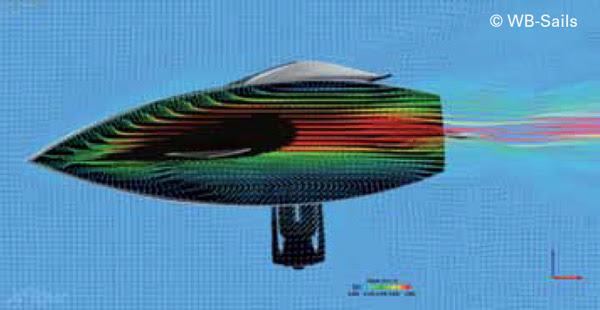Mikko Brummer, of WB-Sails, has been investigating interference under the water. In the first of two articles, he analyses the effect of water passing over the Finn hull and foils, from the point of view of the boat traveling through the water rather than water flowing past a stationary hull
He writes, “To understand better what happens under the water when a boat is sailing along, we need to get acquainted with what in physics is called a frame of reference. If you can still recall your school geometry classes, think of the frame of reference as the coordinate system you are measuring in. We are used to looking at the water rush by the boat when sitting in it, moving with the boat relative to the water.”

"This gives us a ‘false’ impression of the boat slicing neatly through the sea surface, pushing the water slightly aside, and then closing up behind it. In the reference frame of the boat and the sailor, this is true, and actually, the impression is not false at all. But in the reference frame of the sea (or the earth), we know the water is not moving that much at all, and certainly not rushing backward at 5 knots speed along the hull or the centerboard and the rudder.’"
“Our simulation shows what really happens in the earth reference frame, the one of an observer standing on the pier, or a fish swimming under our boat passing by. In reality, the boat is pushing water in front of it, in the front part forward and to the sides, while towards the stern it’s dragging water along, so much so that if your Finn is moving at 5 knots, the water behind its stern is following at 2 knots speed or more. So when you are sailing close to the boat in front of you, you are enjoying a current of 2 knots with you.”
The April 2019 edition can be downloaded from the IFA website here
Or read online here: https://issuu.com/finn-class/docs/finnfareapril2019
|